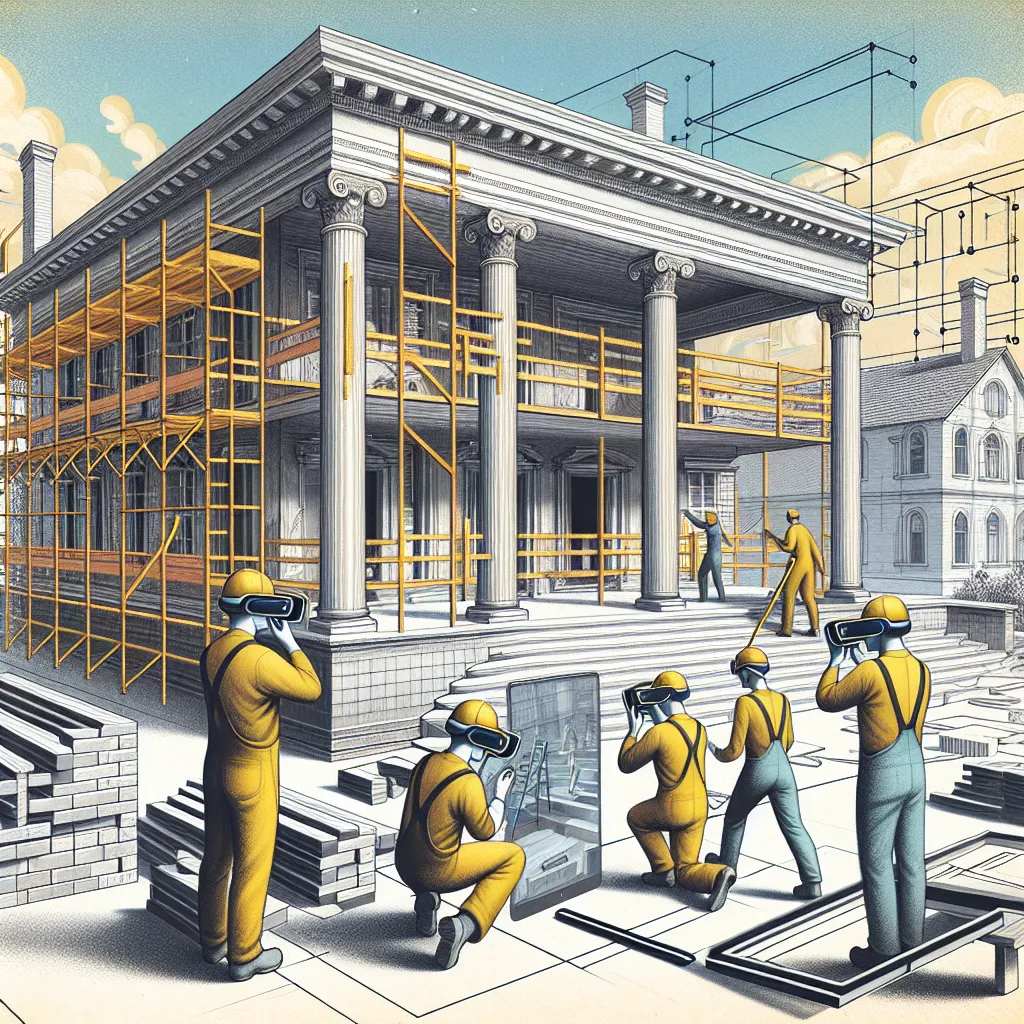How to Use Augmented Reality for Construction Site Inspections
 Quantum Cyber Solutions
Quantum Cyber Solutions
Published on
Thursday, February 15, 2024
How to Use Augmented Reality for Construction Site Inspections
==================================================================
Authors

Name
Con Tech News
Twitter
How to Use Augmented Reality for Construction Site Inspections
Welcome to the frontier where cutting-edge technology meets the rugged practicality of construction! Augmented Reality (AR) is no longer confined to gaming and entertainment—it’s revolutionizing the way construction site inspections are performed. Strap in, as we delve into the nuts and bolts of integrating AR into construction site inspections, unveiling a blend of precision, efficiency, and futuristic capability.
The Evolution of Construction Inspections
Traditional construction inspections have long relied on meticulous manual checks, project plans on paper, and extensive documentation. While these methods are tried and tested, they're also susceptible to human error, time-consuming, and often limited in scope. Enter Augmented Reality (AR): a transformative technology intertwined with construction processes to enhance outcomes significantly.
What is Augmented Reality?
Before diving into its applications, let's unpack what Augmented Reality (AR) is. AR overlays digital information—in the form of images, data, and models—onto the real world through devices like smartphones, tablets, or AR glasses.
Imagine looking at a construction site through an AR headset and seeing digital elements like structural blueprints, safety warnings, and installation guides seamlessly integrated into your field of view. The magic of AR bridges the physical and digital realms, providing an enriched layer of insight.
Benefits of AR in Construction Inspections
Implementing AR in construction site inspections brings a myriad of advantages:
1. Enhanced Accuracy
AR enables inspectors to compare real-time conditions against digital plans with pinpoint accuracy. This visual superimposition helps quickly identify discrepancies between the as-built structure and the design specifications, reducing the margin for errors.
2. Time Efficiency
With AR, inspectors can access digital plans, checklists, and relevant data instantaneously. The real-time feedback and visual guidance streamline the inspection process, drastically cutting down the time required for comprehensive checks.
3. Improved Safety
Safety is paramount on construction sites. AR can project hazard zones, machinery locations, and emergency exit routes directly into the field of view, mitigating risk and enhancing situational awareness.
4. Comprehensive Documentation
AR systems can integrate with data-capturing tools to automatically document inspection findings, complete with annotated images and precise measurements. This automated approach ensures thorough, accurate record-keeping.
Implementing AR for Site Inspections
Ready to harness the transformative power of AR in your construction projects? Here’s a step-by-step guide to get you started.
1. Choose the Right AR Platform
Select an AR platform specifically designed for construction applications. Look for features such as:
- 3D Model Integration: Compatibility with BIM (Building Information Modeling) files.
- Real-Time Data Access: Integration with cloud storage and real-time data systems.
- Collaboration Tools: Support for multi-user access and real-time collaboration.
2. Equip Your Team
Outfit your team with AR-enabled devices such as smart glasses (like Microsoft HoloLens) or tablets. Ensure they are rugged and durable for use on construction sites.
3. Digitize Your Plans
Convert all construction plans, blueprints, and checklists into digital formats that can be easily accessed and overlaid in AR. Leverage BIM software to create detailed 3D models of your project.
4. Train Your Inspectors
Conduct comprehensive training sessions to familiarize your inspection team with AR technology. Highlight its functionalities, operation techniques, and safety protocols.
5. Conduct AR-Assisted Inspections
During inspections, use AR to overlay digital information onto physical structures. Inspectors can walk through the site, viewing augmented data, and comparing on-the-fly. Annotate discrepancies or inspection points directly within the AR environment.
6. Enhance Collaboration
Use AR's collaborative features to connect remote experts with on-site inspectors in real-time. This remote assistance can help solve complex issues promptly, without the need for physical presence.
7. Analyze and Report
Post-inspection, analyze the collected data to identify trends, recurring issues, and areas for improvement. AR-generated reports provide detailed insights that drive better decision-making and future project planning.
Challenges and Future Directions
Despite the immense potential, AR adoption in construction isn’t without challenges. High initial costs, the need for technological proficiency, and integration complexities are hurdles to navigate. However, as AR technology advances and becomes more accessible, these barriers are likely to diminish.
The future promises even more sophisticated AR solutions, potentially incorporating AI for predictive insights and IoT for an ever-connected construction ecosystem. We stand on the brink of a transformative era in construction, fueled by innovation and technological prowess.
Conclusion
Augmented Reality is more than a futuristic concept; it’s a tangible technological revolution making construction site inspections more accurate, efficient, and safer. The benefits of AR adoption are compelling, promising to redefine our approach to construction processes.
Gear up, embrace AR, and lead the charge towards a smarter, more connected construction future. The digital toolbox of tomorrow is here today, and it's time to build the extraordinary.
Join the conversation in the comments below! What excites you the most about AR in construction? Have you tried AR on your site? Share your insights and experiences with us!
Happy building! 🚀
Discuss on Twitter • View on GitHub
Tags
Previous Article
The Future of Construction Workforce Training: Technology and Beyond
Next Article
How Drones are Changing the Face of Construction Site Management
Subscribe to my newsletter
Read articles from Quantum Cyber Solutions directly inside your inbox. Subscribe to the newsletter, and don't miss out.
Written by
